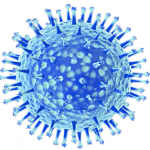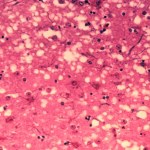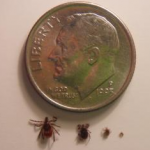infectious disease
Being a new parent is exhausting. All of a sudden, you're out of the hospital and on your own with this amazing, tiny human, and you alone are responsible for her care. You're given reams of paperwork about feeding and sleeping, developmental milestones, red flags to look out for. You're inundated with information you barely have time to look at. Mom is trying to heal from childbirth while barely sleeping, while her partner is trying to pick up the slack and pitch in as much as possible. You both fumble with the car seat, thinking that NASA must have equipment that's easier to figure out. You…
“Millions of Americans use antibacterial hand soap and body wash products. Although consumers generally view these products as effective tools to help prevent the spread of germs, there is currently no evidence that they are any more effective at preventing illness than washing with plain soap and water,” wrote the US Food and Drug Administration (FDA) in issuing a proposed rule last month. “Further, some data suggest that long-term exposure to certain active ingredients used in antibacterial products—for example, triclosan (liquid soaps) and triclocarban (bar soaps)—could pose health risks,…
Guest post by Tim Fothergill, Ph.D.
In January of this year the British Chief Medical Officer urged her government to add threat posed by superbugs to the official list of "Apocalypses to Worry About" along with catastrophic terrorist attacks and massive flooding. With typical British understatement, its actual name is the National Risk Register of Civil Emergencies but a very stark picture was painted of a post-antibiotic world in which routine operations, such as hip replacements, could prove fatal. In September, The Centers for Disease Control in the US issued a similar…
Part I: the microbiology of zombies
Part II: ineffective treatments and how not to survive the apocalypse
Part III: “We’re all infected”
Part IV: hidden infections
Part V: beware the bite?
Have a new article up today on Medscape (free registration required) on human-animal infections: a primer for clinicians.
Now that seemingly the flu outbreak storyline has been wrapped up on The Walking Dead (unsurprisingly, but disappointingly, with their ineffective treatments proving to be miracle cures), there's still one more zombie microbiology topic I'd like to cover: what's up with the bite, and is it the cause of death? I said previously:
"We know the pathogen can certainly be spread by bites and then cause zombification that way..."
but one commenter disagreed, noting:
"I don’t think we have evidence for that from the show. I think it clearer that zombie bites cause death, and there…
(As previously, spoilers abound)
So on this week's Walking Dead soap opera, we find that Daryl/Michonne's group is still out and about searching for medical supplies. Back at the prison, the food situation is dire (apparently all the food stores were in the cell block where the infection broke out), so Rick and Carol head out to look for both medicines and food from the local 'burbs. During their outing, discussion ensues of Carol's attempt to stop the prison's apparent influenza outbreak by killing two people who, at that point, were the only ones showing symptoms of disease. Rick decides he…
Warning: here be spoilers
In many latter-day zombie movies, books, and TV shows, zombie-ism has a biological cause. In 28 Days Later, the infection is caused by the "Rage" virus, which escaped from a lab when animal rights activists break in and release a group of infected chimpanzees. Of course, one of the animals promptly bites one of its "liberators," and the infection spreads rapidly throughout Great Britain. In Zombieland, it's a mutated form of "mad cow" disease. The Crazies, it's the Trixie virus; World War Z, the Solanum virus; Resident Evil, the T virus. I could go on and on.…
(Spoilers. And things.)
After the start of season 4 of the Walking Dead and the introduction of a new nemesis: a fast-spreading, deadly infectious disease that seems to be a strain of influenza, I was looking forward to the plot arc of this season.
And then episode 3, "Isolation", happened. From an infectious disease standpoint, I say, bah.
At the end of the previous episode, "Infected", the group had decided to lock up anyone who was showing signs of the infectious disease within the death row cellblock, so that they would not further spread the disease, and to put the children and elderly (…
Student guest post by McKenzie Steger
Off the southeastern coast of Australia lies a small island that in the 1700 and 1800’s was inhabited by the very worst of Europe’s criminals and is now the only natural home in the world to a species named after the devil himself. Decades later beginning in 1996 Tasmanian devils were going about their nocturnal lifestyle in normal devilish fashion feasting on small mammals and birds, finding mates and reproducing, occasionally fighting with one another and so on. (1) Just as criminals divvied up their booty hundreds of years before, the devils were…
Student guest post by Sean McCaul
Image Source: http://www.cejournal.net/?p=1934
The next time somebody in your office or household has the flu, you might want to consider keeping your distance. A new study published this month in Nature Communications suggests that about half of the transmission of influenza A results from inhalation of microscopic infectious droplets created by the coughing and sneezing of people infected with the flu. The flu virus hitches a ride in these droplets, and may infect nearby susceptible people who breathe them in.1
The influenza A virus…
Student guest post by Bradley Christensen
No, this isn’t a clip from a science fiction movie. Although dramatic, this does occur in the brains of some people and animals around on our home planet. What is a prion you ask? Prions are almost as mysterious to the scientists that research them as they are to me, you and the neighbor down the street. Prion is a term used to describe an abnormal and particularly destructive strand of protein found in the brain. Proteins are the building blocks of the muscles and tissues of our bodies that work combine together to…
Student guest post by Kyle Malter
In many areas of the country there is a vile blood sucker that lurks in our forests, our parks and even our backyards. What concerns us is not what this creature takes but rather what it leaves in our body after it bites us: corkscrew shaped bacteria called spirochetes and with the name Borrelia burgdorferi. When the bacteria invade our bodies and cause problems along the way we call it Lyme disease.
It is Lyme, not “Lymes” disease, and here’s how it got that name. In the early 1970’s a large number of cases emerged involving children with a…
Student guest post by Julia Wiederholt
I don’t think there is a single person that can claim to have never had the joyous experience (sarcasm intended) of suffering from the influenza. We all recognize the common symptoms that accompany this infectious little virus taking up residence in our bodies: the chills accompanying a fever, the total body ache, the nausea, and overall feeling of malaise. Typically this virus comes and goes within a week without serious side effects. When novel strains of the influenza pop up however, there can be more serious complications as your…
Student guest post by Brandon Woods
A Dangerous Paradise
From jungles with jaguars to crystal blue lakes with freshwater sharks, Nicaragua is one of the most beautiful and dangerous countries in Central America. The brilliant biodiversity attracts millions of tourists each year and the looming volcanoes that pepper the landscape can be an exciting yet unsettling sight. However, in reality much of the danger in Nicaragua comes from the risk of infectious diseases. For example, if you’re planning to travel to this tropical paradise anytime soon, the Center for Disease Control (CDC) states that…
Student guest post by Carrie Ellsworth
During the summer of 2010 I spent two months in Ghana studying a parasite called schistosomiasis. We worked in a small town called Adasawase to determine prevalence and treat the schoolchildren who were infected. We were told that schistosomiasis was not a major health concern for the people in the town because they were often faced with other diseases that had more immediate and severe health consequences than a parasitic infection. It became apparent that if we wanted the people of this small town to take this health threat seriously, we needed to…
Student guest post by Molly Stafne
Nothing could be worse than watching your seven-year-old lying in a hospital bed fighting for his life after being diagnosed with hemolytic uremic syndrome. Unfortunately, Mary McGonigle-Martin experienced it first hand as her son, Chris, fought for his life after being poisoned by E. coli 0157:H7 found in contaminated raw milk. Like many mothers, Mary was coerced into believing the inaccurate “facts” given to her by the farm she purchased raw milk from. Too often across the US, parents are given incorrect information about the safety of the milk they drink…
Student guest post by Naomi Kirschenbaum
Although we can never know, there are estimates in the range of 15,000 displaced pets in the wake of 2005 Hurricane Katrina. Many of the dogs found their way to shelters and homes in our community around the Monterey Bay in California. As a local veterinarian the most notable observation I saw was how it “seemed” that so many were heartworm positive. Six years later we have a published study finding a 48.8% prevalence of heartworm in these dogs.
This story is an example of a few important lessons. First, how things seemed to me…
Student guest post by Jack Hamersky
After successfully completing a job interview I had the opportunity to take the next step in my employment process: taking a Tuberculosis or TB test. I have received the test before but never really understood the point of testing for a disease no one ever sees in my community. I always thought, “Why not focus all this effort and money on more prevalent infectious agents such as Ebola or HIV?” You know, focus on something important. So, as the nurse called me in from the waiting room I began to curse that hard little bubble that would soon be…
It's time for this year's second installment of student guest posts for my class on infectious causes of chronic disease. Fifth one this year is by Nai-Chung Chang.
Of the many health problems that everyone is bound to have at some point, influenza, or just “the flu,” is one of the most prominent. In fact, we call the time during which it is most prevalent the “flu season”. It has now become a regular occurrence in the U.S. to just get a shot before the flu season hits, and be free of it for the rest of the year. In some cases, like me, people just decide not to get the…







